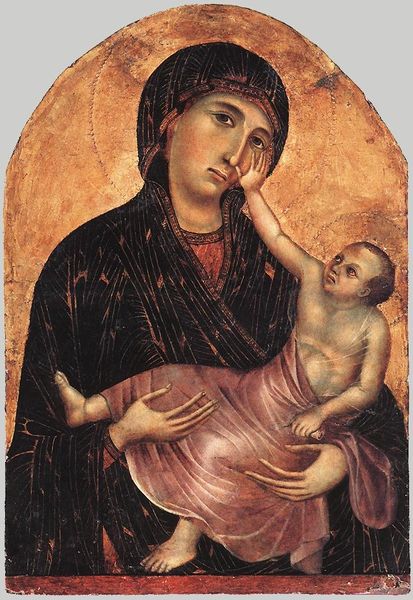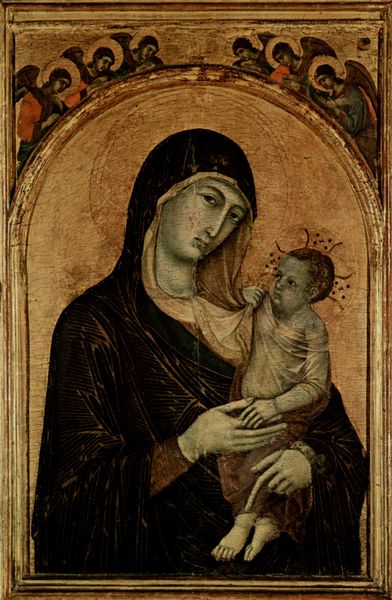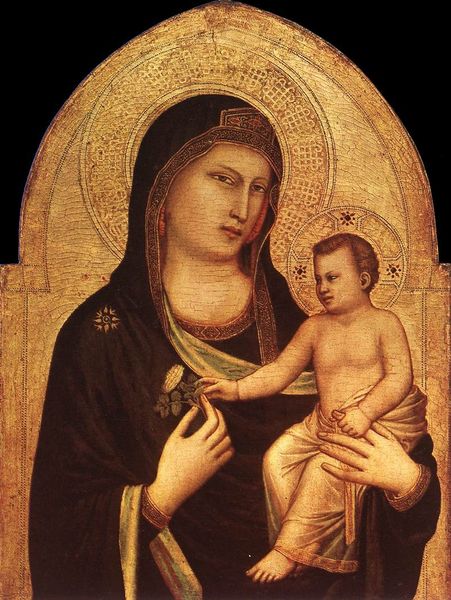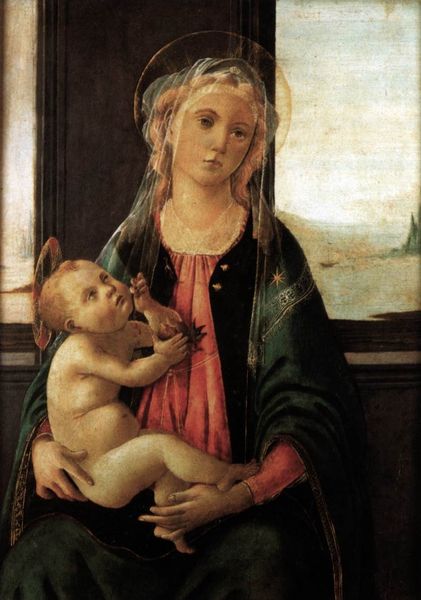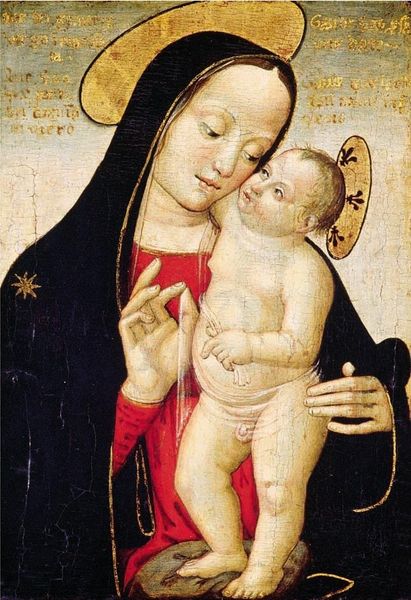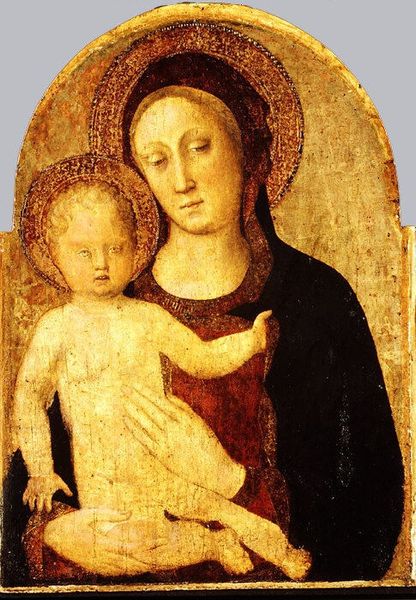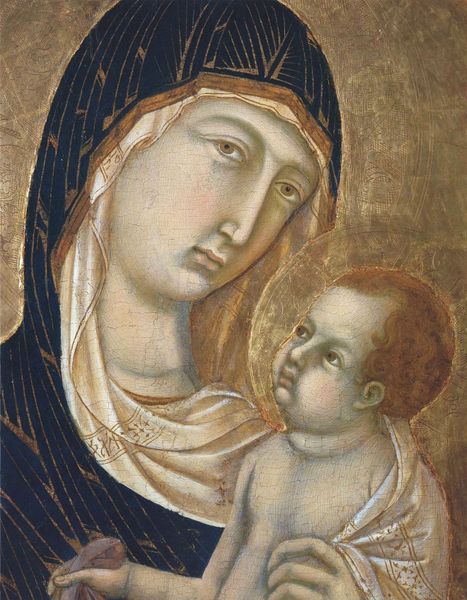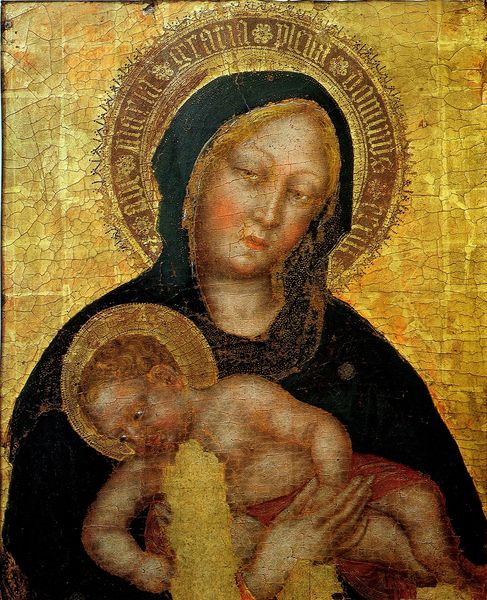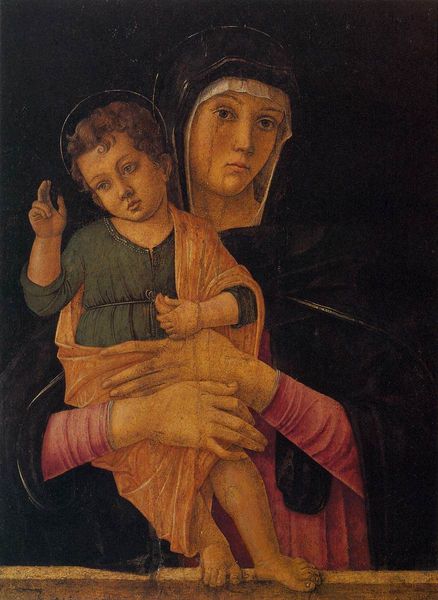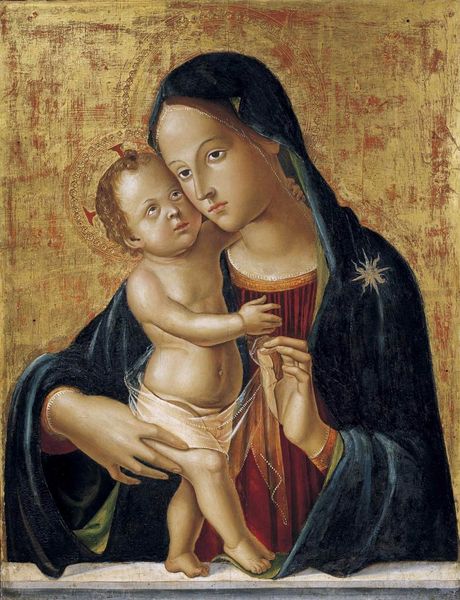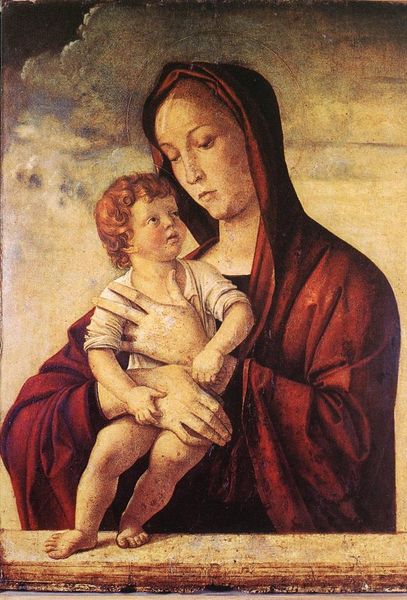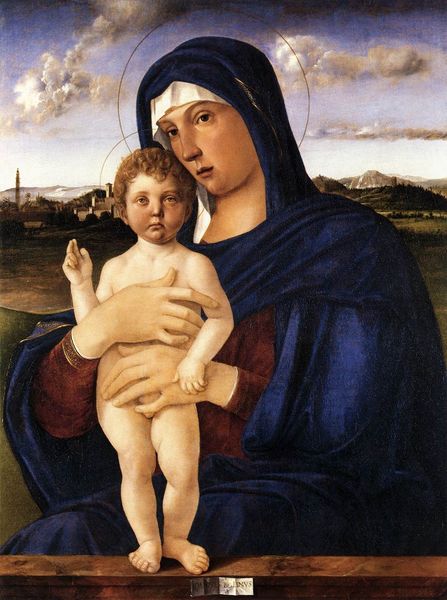
painting, oil-paint
#
portrait
#
painting
#
oil-paint
#
figuration
#
madonna
#
oil painting
#
earthy colours
#
child
#
facial painting
#
christianity
#
lady
#
italian-renaissance
#
early-renaissance
#
christ
Dimensions: 75 x 50 cm
Copyright: Public domain
Curator: The tenderness captured here is just breathtaking. Editor: Yes, it's striking. We're looking at Giovanni Bellini's "Madonna with Child," an oil painting dating back to about 1475, placing it firmly in the Early Renaissance. Curator: I’m immediately drawn to the texture. Look at the velvet-like black background contrasting with the luminosity of the flesh tones. You can almost feel the weight and softness of the fabrics. Was that typical for Bellini, focusing on such rich materiality? Editor: Bellini emerged within a cultural milieu in Venice which had extremely strong trading relationships with the East. Those connections introduced new pigments and textures. We also shouldn't underestimate the powerful role the Catholic church had in commissioning works that depicted biblical narratives in ever-grander fashion to engage the Venetian public. Curator: It does feel inherently luxurious, almost tactile. Beyond the symbolic and historical considerations, the specific use of oil paint surely was also transformative. The layering! Editor: Absolutely. This technique, perfected during the Renaissance, involved layering translucent glazes, something artists acquired via trade, and allowed Bellini to achieve that depth of color and subtle gradations we observe. This attention to the material, this heightened naturalism, reinforced the Church’s message but also signified new wealth available during the Renaissance period. Curator: It makes you wonder about the workshops, doesn’t it? All the skilled hands needed to grind pigments, prepare canvases...It also says something about the place of painting as a skilled craft. Editor: Definitely. Thinking about the social context, the Renaissance witnessed the elevation of the artist from craftsman to genius, yet workshops still depended on a structured hierarchy of labour, influencing both the execution and the circulation of such devotional images. Curator: It's really profound when you start to consider the process – transforming raw materials into something imbued with this much emotional resonance. It challenges our perceptions of how 'high art' and seemingly humble craftsmanship intersect. Editor: It encourages us to reconsider artistic labor, and, equally, think about the audience for such pieces. Powerful imagery reinforcing religious doctrine also acted as statements of social position for Venetian patricians. Curator: So, beyond the image, we're looking at something shaped by trade, materials, workshop labor, and religious authority. Editor: Precisely. Contextualizing “Madonna with Child” opens a fascinating lens through which to consider art's dynamic relationship to social history.
Comments
No comments
Be the first to comment and join the conversation on the ultimate creative platform.
